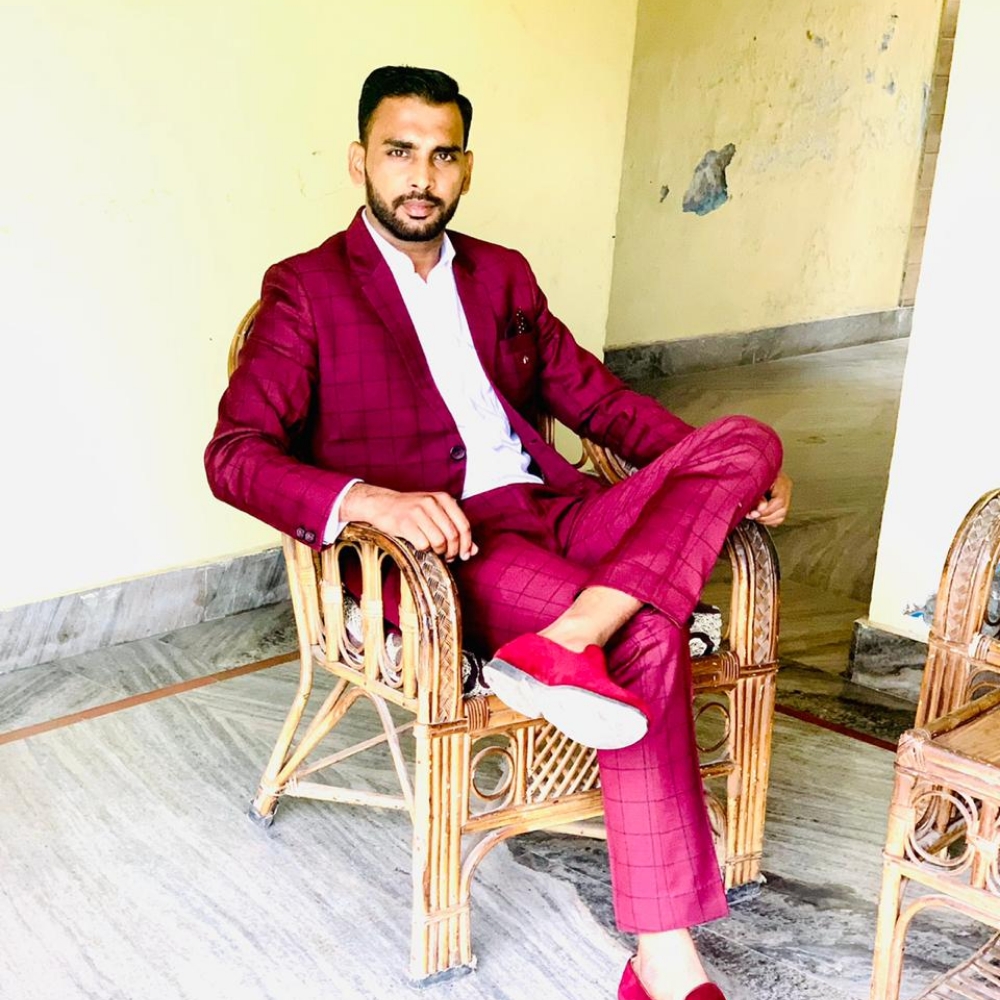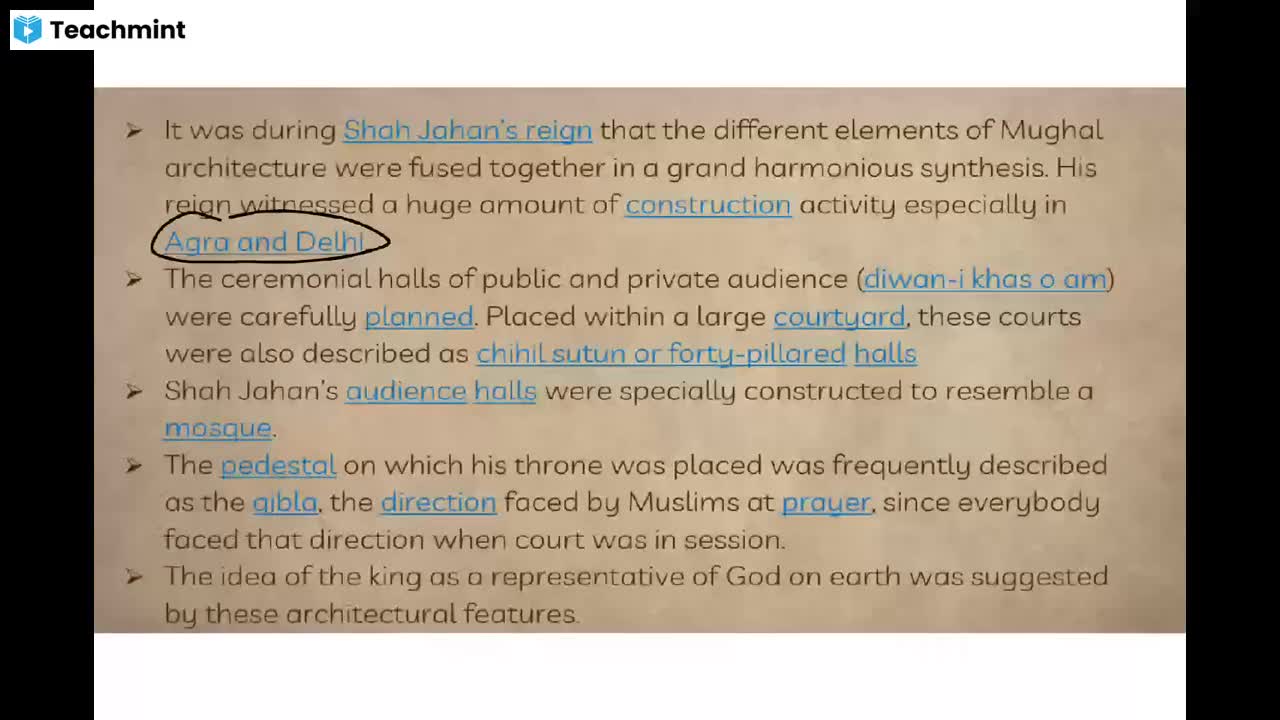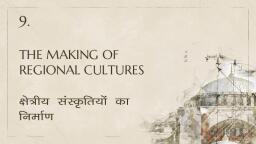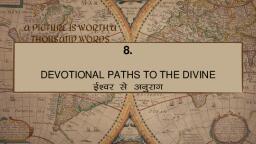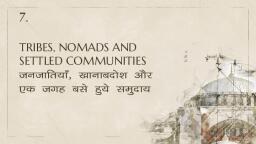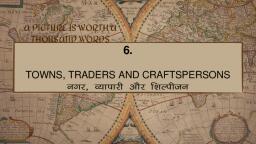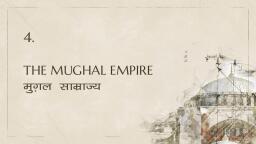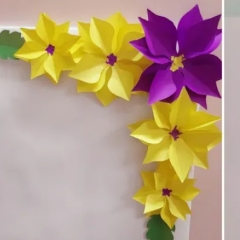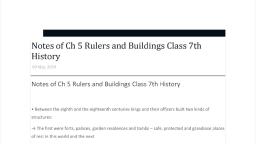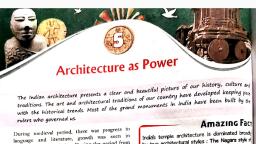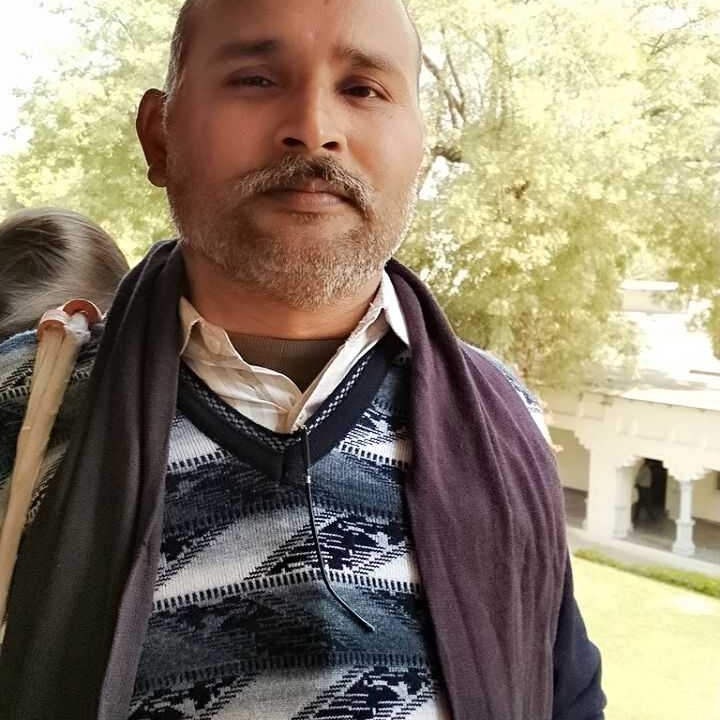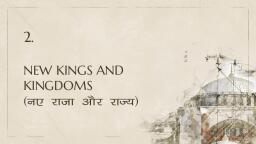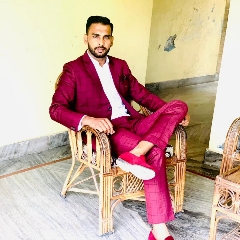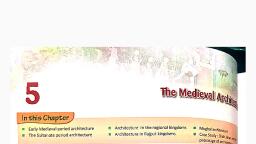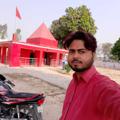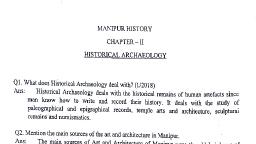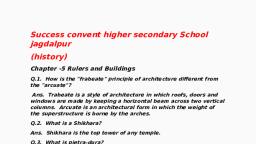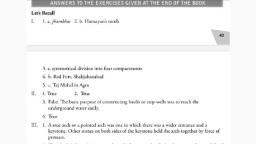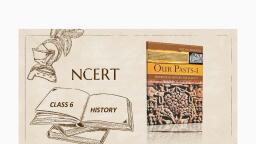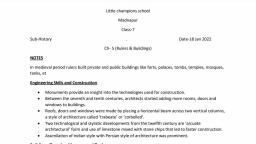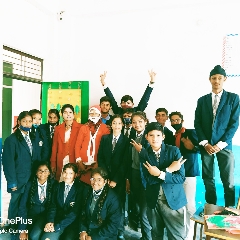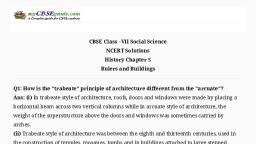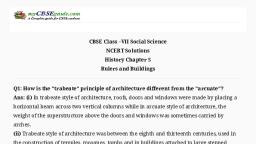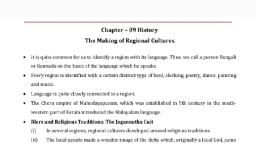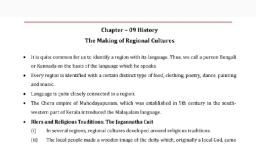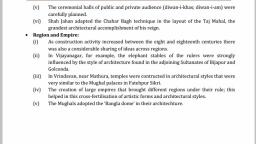Page 2 :
OVERVIEW ?, 1., 2., , 3., 4., 5., , 6., , ENGINEERING SKILLS AND CONSTRUCTION, TEMPLE CONSTRUCTION IN THE EARLY ELEVENTH CENTURY, BUILDING TEMPLES, MOSQUES AND TANKS, WHY WERE TEMPLES TARGETED?, GARDENS, TOMBS AND FORTS, REGION AND EMPIRE
Page 3 :
● The first balcony of the Qutb Minar., , Qutbuddin Aybak had this, constructed around 1199., ● The surface of the minar is curved, and angular. Placing an inscription, on such a surface required great, precision. Only the most skilled, craftsperson could perform this, task. very few buildings were made, of stone or brick 800 years ago
Page 5 :
Between the eighth and the eighteenth centuries kings and, their officers built two kinds of structures:, ➢ The first were forts, palaces, garden residences and tombs –, safe, protected and grandiose places of rest in this world;, ➢ The second were structures meant for public activity including temples,, mosques, tanks, wells, caravanserais and bazaars., ➢ Kings were expected to care for their subjects, and by making structures for their, use and comfort, rulers hoped to win their praise., ➢ Construction activity was also carried out by others, including merchants. They, built temples, mosques and wells., ➢ However, domestic architecture – large mansions (havelis) of merchants – has, survived only from the eighteenth century.
Page 6 :
ENGINEERING SKILLS AND CONSTRUCTION, vfHk;kaf=kdh dkS'ky rFkk fuekZ.k dk;, ➢ Monuments provide an insight into the technologies used for, , construction., ➢ Roof for example., , We can make this by placing wooden beams or a slab of stone, across four walls. But the task becomes difficult if we want to make, a large room with an elaborate superstructure., This requires more sophisticated skills.
Page 7 :
ENGINEERING SKILLS AND CONSTRUCTION, ➢ Between the seventh and tenth centuries architects started, , adding more rooms, doors and windows to buildings., ➢ Roofs, doors and windows were still made by placing a, horizontal beam across two vertical columns, a style of, architecture called “trabeate” or “corbelled”., ➢ Between the eighth and thirteenth centuries the trabeate style, was used in the construction of temples, mosques, tombs and in, buildings attached to large stepped-wells (baolis).
Page 12 :
TEMPLE CONSTRUCTION IN THE EARLY 11TH CENTURY, ➢ The plan of the temple.:-, , ➢ An ornamented gateway led to an entrance, and the main, hall (mahamandapa) where dances were performed., ➢ The image of the chief deity was kept in the main shrine, (garbhagriha). This was the place for ritual worship where, only the king, his immediate family and priests gathered., ➢ The Khajuraho complex contained royal temples where, commoners were not allowed entry., ➢ The temples were decorated with elaborately carved, sculptures.
Page 14 :
➢ Constructing it was not easy because there were no cranes in, , ➢, ➢, , ➢, , ➢, , those days and the 90 tonne stone for the top of the shikhara was, too heavy to lift manually., So the architects built an inclined path to the top of the temple,, placed the boulder on rollers and rolled it all the way to the top., The path started more than 4 km away so that it would not be too, steep., This was dismantled after the temple was constructed. But the, residents of the area remembered the experience of the, construction of the temple for a long time., Even now a village near the temple is called Charupallam, the, “Village of the Incline”
Page 15 :
A “true” arch., The “keystone” at the centre, of the arch transferred the, weight of the superstructure, to the base of the arch., , True arch;, detail from the Alai Darwaza, (early fourteenth century)., Quwwat alIslam mosque, Delhi.
Page 16 :
➢ Two technological and stylistic developments are noticeable, , from the twelfth century., (1) The weight of the superstructure above the doors and, windows was sometimes carried by arches. This architectural, form was called “ARCUATE”( ^pkikdkj* )., (2) Limestone cement was increasingly used in construction., This was very high-quality cement, which, when mixed with, stone chips hardened into concrete. This made construction, of large structures easier and faster.
Page 18 :
BUILDING TEMPLES, MOSQUES AND TANKS, eafnjksa] elftnksa vkSj gkSTkksa dk fuekZ.k, ➢ Temples and mosques were beautifully constructed because they were, , places of worship. They were also meant to demonstrate the power,, wealth and devotion of the patron., ➢ Take the example of the Rajarajeshvara temple. An inscription mentions, that it was built by King Rajarajadeva for the worship of his god,, Rajarajeshvaram., ➢ The king took the god’s name because it was auspicious and he wanted, to appear like a god. Through the rituals of worship in the temple one, god (Rajarajadeva) honoured another (Rajarajeshvaram).
Page 19 :
➢ A royal architect, ➢ The Mughal emperor Shah Jahan’s chronicler declared that the, , ruler was the “architect of the workshop of empire and religion”., , ➢ Plan of the Jami Masjid built by, , Shah Jahan in his new capital at, Shahjahanabad, 1650-1656
Page 20 :
➢, ➢, , ➢, , ➢, , The largest temples were all constructed by kings., The other, lesser deities in the temple were gods and goddesses, of the allies and subordinates of the ruler., The temple was a miniature model of the world ruled by the king, and his allies., As they worshipped their deities together in the royal temples, it, seemed as if they brought the just rule of the gods on earth.
Page 21 :
➢, , ➢, , ➢, , Muslim Sultans and Padshahs did not claim to be incarnations of, god but Persian court chronicles described the Sultan as the, “Shadow of God”., An inscription in the Quwwat al-Islam mosque explained that God, chose Alauddin as a king because he had the qualities of Moses and, Solomon, the great lawgivers of the past., The greatest lawgiver and architect was God Himself. He created, the world out of chaos and introduced order and symmetry
Page 22 :
➢, , ➢, , ➢, , As each new dynasty came to power, kings wanted to emphasise, their moral right to be rulers., , Constructing places of worship provided rulers with the chance to, proclaim their close relationship with God, especially important in an, age of rapid political change., Rulers also offered patronage to the learned and pious, and tried to, transform their capitals and cities into great cultural centres that, brought fame to their rule and their realm.
Page 23 :
➢, , ➢, , ➢, , It was widely believed that the rule of a just king would be an age of, plenty when the heavens would not withhold rain., At the same time, making precious water available by constructing, tanks and reservoirs was highly praised., , Sultan Iltutmish won universal respect for constructing a large, reservoir just outside Dehli-i-Kuhna., It was called the Hauz-i-Sultani or the “King’s Reservoir”
Page 24 :
➢, , ➢, , Rulers often constructed tanks and reservoirs – big and small – for, use by ordinary people. Sometimes these tanks and reservoirs were, part of a temple, mosque ( the small tank in the Jami Masjid ) or a, gurdwara gurdwara (a place of worship and congregation for Sikhs)., , IMPORTANCE OF WATER, The Persian terms abad, populated, prosperous, and abadi,, flourishing, are both derived from the word ab, meaning water.
Page 26 :
WHY WERE TEMPLES TARGETED?, eafnjksa dks D;ksa u"V fd;k x;k\, ➢, , ➢, , Because kings built temples to demonstrate their devotion to God, and their power and wealth, it is not surprising that when they, attacked one another’s kingdoms they often targeted these, buildings., In the early ninth century when the Pandyan king Shrimara, Shrivallabha invaded Sri Lanka and defeated the king, Sena I (831851), the Buddhist monk and chronicler Dhammakitti noted:, “he removed all the valuables ...
Page 27 :
WHY WERE TEMPLES TARGETED?, eafnjksa dks D;ksa u"V fd;k x;k\, ….The statue of the Buddha made entirely of gold in the Jewel Palace, ... and the golden images in the various monasteries – all these he, seized.”, ➢, , ➢, , The blow to the pride of the Sinhalese ruler had to be avenged and, the next Sinhalese ruler, Sena II, ordered his general to invade, Madurai, the capital of the Pandyas., , The Buddhist chronicler noted that the expedition made a special, effort to find and restore the gold statue of the Buddha.
Page 28 :
WHY WERE TEMPLES TARGETED?, ➢, , ➢, , Similarly in the early eleventh century, when the Chola king, Rajendra I built a Shiva temple in his capital he filled it with prized, statues seized from defeated rulers., An incomplete list included:, a Sun-pedestal from the Chalukyas,, a Ganesha statue and several statues of Durga;, a Nandi statue from the eastern Chalukyas;, an image of Bhairava (a form of Shiva) and, Bhairavi from the Kalingas of Orissa; and, a Kali statue from the Palas of Bengal.
Page 29 :
WHY WERE TEMPLES TARGETED?, ➢, , ➢, , ➢, , Sultan Mahmud of Ghazni was a contemporary of Rajendra I. During, his campaigns in the subcontinent he attacked the temples of, defeated kings and looted their wealth and idols., Sultan Mahmud was not a very important ruler at that time. But by, destroying temples – especially the one at Somnath – he tried to win, credit as a great hero of Islam., In the political culture of the Middle Ages most rulers displayed their, political might and military success by attacking and looting the, places of worship of defeated rulers.
Page 31 :
GARDENS, TOMBS AND FORTS, ( ckx] Eidcjs rFkk fdys), ➢ Under the Mughals, architecture became more complex. Babur,, , Humayun, Akbar, Jahangir, and especially Shah Jahan were personally, interested in literature, art and architecture., ➢ In his autobiography, Babur described his interest in planning and laying, out formal gardens, placed within rectangular walled enclosures and, divided into four quarters by artificial channels., ➢ These gardens were called chahar bagh, four gardens, because of their, symmetrical division into quarters., ➢ Beginning with Akbar, some of the most beautiful chahar baghs were, constructed by Jahangir and Shah Jahan in Kashmir, Agra and Delhi
Page 32 :
➢ There were several important architectural innovations during Akbar’s, ➢, , ➢, , ➢, , ➢, , reign., For inspiration, Akbar’s architects turned to the tombs of his Central, Asian ancestor, Timur., The central towering dome and the tall gateway (pishtaq) became, important aspects of Mughal architecture, first visible in Humayun’s, tomb., The tomb was placed in the centre of a huge formal chahar bagh and, built in the tradition known as “eight paradises” or hasht bihisht – a, central hall surrounded by eight rooms., The building was constructed with red sandstone, edged with white, marble.
Page 34 :
➢ Tomb of Humayun, constructed between 1562 and 1571., ➢ Has the water channels ( ugjksa )
Page 36 :
➢ It was during Shah Jahan’s reign that the different elements of Mughal, , ➢, , ➢, ➢, , ➢, , architecture were fused together in a grand harmonious synthesis. His, reign witnessed a huge amount of construction activity especially in, Agra and Delhi., The ceremonial halls of public and private audience (diwan-i khas o am), were carefully planned. Placed within a large courtyard, these courts, were also described as chihil sutun or forty-pillared halls, Shah Jahan’s audience halls were specially constructed to resemble a, mosque., The pedestal on which his throne was placed was frequently described, as the qibla, the direction faced by Muslims at prayer, since everybody, faced that direction when court was in session., The idea of the king as a representative of God on earth was suggested, by these architectural features.
Page 37 :
➢ The connection between royal justice and the imperial court was, , emphasised by Shah Jahan in his newly constructed court in the, Red Fort at Delhi., ➢ Behind the emperor’s throne were a series of pietra dura inlays, that depicted the legendary Greek god Orpheus playing the lute., ➢ It was believed that Orpheus’s music could calm ferocious beasts, until they coexisted together peaceably., ➢ The construction of Shah Jahan’s audience hall aimed to, , communicate that the king’s justice would treat the high and the, low as equals creating a world where all could live together in, harmony.
Page 39 :
➢ In the early years of his reign, Shah Jahan’s capital was at Agra, a, , city where the nobility had constructed their homes on the banks of, the river Yamuna., ➢ These were set in the midst of formal gardens constructed in the, chahar bagh format., ➢ The chahar bagh garden also had a variation that historians, describe as the “riverfront garden”., ➢ In this the dwelling was not located in the middle of the chahar, bagh but at its edge, close to the bank of the river.
Page 40 :
➢ Shah Jahan adapted the river-front garden in the layout of the Taj, , Mahal, the grandest architectural accomplishment of his reign., ➢ Here the white marble mausoleum was placed on a terrace by the, edge of the river and the garden was to its south., ➢ Shah Jahan develop this architectural form as a means to control the, access that nobles had to the river., ➢ In the new city of Shahjahanabad that he constructed in Delhi, the, , imperial palace commanded the river-front., ➢ Only specially favoured nobles – like his eldest son Dara Shukoh – were, given access to the river., ➢ All others had to construct their homes in the city away from the River, Yamuna
Page 42 :
➢ A reconstruction from a map of the river-front garden city of, , Agra. The garden palaces of the nobles are placed on both banks, of the Yamuna. The Taj Mahal is on the left.
Page 43 :
➢ 1850 map of, , Shahjahanabad., ➢ The city appears to be, very crowded, there, were many large, gardens as well.
Page 44 :
REGION AND EMPIRE, {ks= o lkezkT;, ➢ The traditions of one region were adopted by another., ➢ In Vijayanagara, for example, the elephant stables of the rulers, , were strongly influenced by the style of architecture found in, the adjoining Sultanates of Bijapur and Golconda ., ➢ In Vrindavan, near Mathura, temples were constructed in, , architectural styles that were very similar to the Mughal, palaces in Fatehpur Sikri.
Page 45 :
➢ Interior of temple of Govind, , Deva in Vrindavan, 1590., ➢ The temple was constructed, out of red sandstone. Notice, the two (out of four), intersecting arches that made, the highceiling roof. This style, of architecture is from northeast Iran (Khurasan) and was, used in Fatehpur Sikri.
Page 46 :
REGION AND EMPIRE, ➢ The creation of large empires that brought different regions under their, , rule helped in this cross-fertilisation of artistic forms and architectural, styles. Mughal rulers were particularly skilled in adapting regional, architectural styles in the construction of their own buildings., ➢ In Bengal, for example, the local rulers had developed a roof that was, designed to resemble a thatched hut. The Mughals liked this “Bangla, dome” so much that they used it in their architecture., ➢ The impact of other regions was also evident. In Akbar’s capital at, Fatehpur Sikri many of the buildings show the influence of the, architectural styles of Gujarat and Malwa.
Page 47 :
REGION AND EMPIRE, ➢ Even though the authority of the Mughal, , rulers waned in the eighteenth century, the, architectural styles developed under their, patronage were constantly used and, adapted by other rulers whenever they tried, to establish their own kingdoms
Page 49 :
Churches that touched the skies, ➢ From the twelfth century onwards, attempts began in France to build, , churches that were taller and lighter than earlier buildings., ➢ This architectural style, known as Gothic, was distinguished by high, pointed arches, the use of stained glass, often painted with scenes drawn, from the Bible, and flying buttresses., ➢ Tall spires and bell towers which were visible from a distance were, added to the church, ➢ One of the best-known examples of this architectural style is the church, of Notre Dame in Paris, which was constructed through several decades, in the twelfth and thirteenth centuries.
Page 52 :
THANKS !
